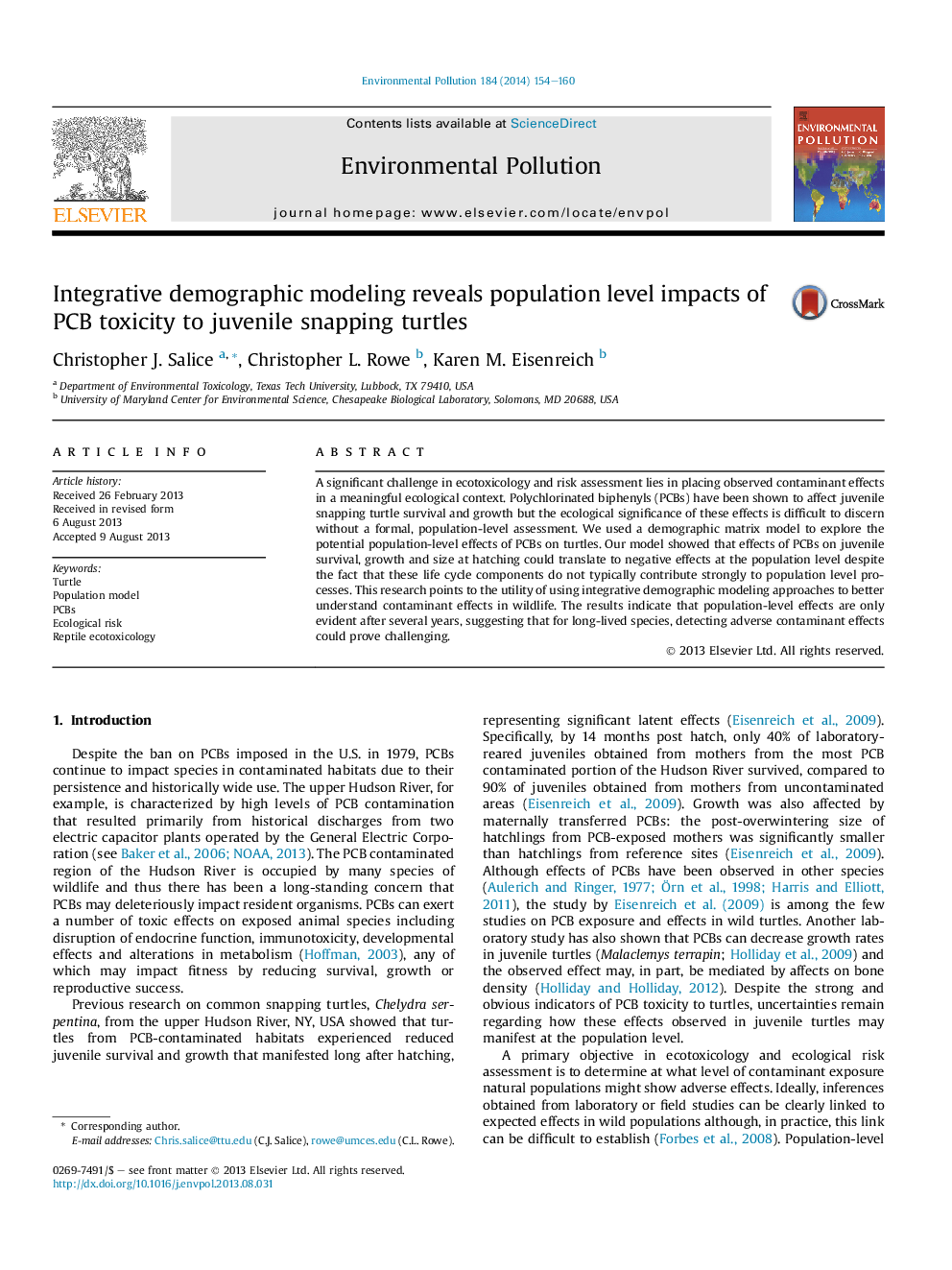| Article ID | Journal | Published Year | Pages | File Type |
|---|---|---|---|---|
| 6317403 | Environmental Pollution | 2014 | 7 Pages |
Abstract
A significant challenge in ecotoxicology and risk assessment lies in placing observed contaminant effects in a meaningful ecological context. Polychlorinated biphenyls (PCBs) have been shown to affect juvenile snapping turtle survival and growth but the ecological significance of these effects is difficult to discern without a formal, population-level assessment. We used a demographic matrix model to explore the potential population-level effects of PCBs on turtles. Our model showed that effects of PCBs on juvenile survival, growth and size at hatching could translate to negative effects at the population level despite the fact that these life cycle components do not typically contribute strongly to population level processes. This research points to the utility of using integrative demographic modeling approaches to better understand contaminant effects in wildlife. The results indicate that population-level effects are only evident after several years, suggesting that for long-lived species, detecting adverse contaminant effects could prove challenging.
Related Topics
Life Sciences
Environmental Science
Environmental Chemistry
Authors
Christopher J. Salice, Christopher L. Rowe, Karen M. Eisenreich,
